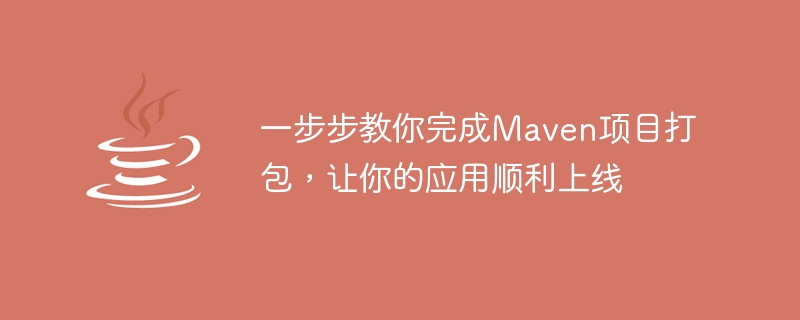

Teach you step by step how to complete Maven project packaging and let your application go online smoothly
In the software development process, project packaging is a very important part. Using Maven as a build tool can help us package and deploy projects more efficiently. This article will teach you step by step how to use Maven for project packaging and provide specific code examples.
Step 1: Install Maven
To use Maven for project packaging, you first need to install Maven locally. You can download the latest version of Maven from the official website at https://maven.apache.org/. After the installation is complete, make sure that you enter the mvn command on the command line to correctly display the Maven version information.
Step 2: Create a Maven project
In the command line, enter the directory where you want to create the project, and then execute the following command:
mvn archetype:generate -DgroupId=com.example -DartifactId =myproject -DarchetypeArtifactId=maven-archetype-quickstart -DinteractiveMode=false
This command will create a basic Maven project structure, including a pom.xml file and a source code directory named myproject.
Step 3: Configure the pom.xml file
The pom.xml file is the core configuration file of the Maven project. It defines the project's dependencies, packaging methods and other information. Open the pom.xml file and you will see an initial configuration, which you need to modify appropriately according to your project needs.
First, add any external library dependencies your project requires within the
Secondly, configure the project packaging method in the
Step 4: Project packaging
Enter the root directory of the project on the command line, and then execute the following command to package the project:
mvn package
After executing this command, Maven will package the project according to your configuration in the pom.xml file Packaged into the corresponding file format. The packaged files are located in the target directory.
If your project is a web application and you configure the packaging method as a WAR file in the pom.xml file, then the packaged file will be a war package. You can deploy this war package to a Servlet container such as Tomcat.
If your project is an ordinary Java application, the packaged file will be a JAR package. You can execute the following command on the command line to run the JAR package:
java -jar target/myproject-1.0-SNAPSHOT.jar
It should be noted that myproject-1.0-SNAPSHOT.jar here is You need to adjust the name of the packaged JAR package according to the actual situation.
Step 5: Push the project to the code repository
During the project development process, you may host the code in a code repository, such as Git. If you use Git as a code version control tool, then you can execute the following command to push the code to the code repository:
git add .
git commit -m "Initial commit"
git push origin master
In this way, your code is successfully pushed to the code repository, and you can share and collaborate on development with team members.
Through the above steps, you have successfully completed the packaging of the project using Maven. The powerful functions of Maven can help us manage and deploy projects more efficiently. I hope this article can be helpful to you, and I wish you smooth launch of your application!
The above is the detailed content of Detailed guide: Complete Maven project packaging step by step to ensure your application goes online seamlessly. For more information, please follow other related articles on the PHP Chinese website!
 What is j2ee
What is j2ee
 Solutions to unknown software exception exceptions in computer applications
Solutions to unknown software exception exceptions in computer applications
 Introduction to the meaning of += in C language
Introduction to the meaning of += in C language
 How to install the driver
How to install the driver
 What are the main characteristics of computers?
What are the main characteristics of computers?
 MySQL password change method
MySQL password change method
 Ripple currency today's market price
Ripple currency today's market price
 modify ip
modify ip
 What are the C language programming software?
What are the C language programming software?




